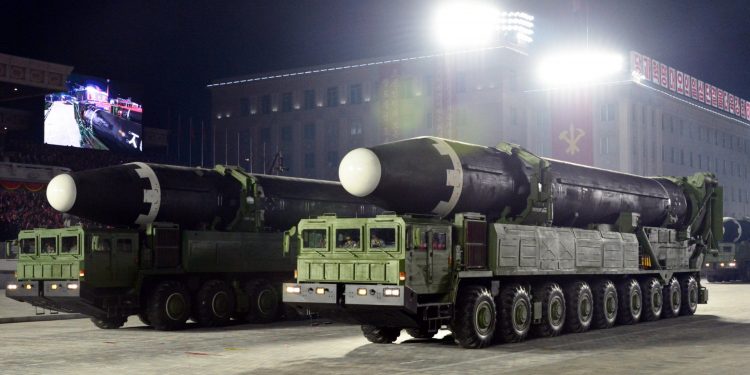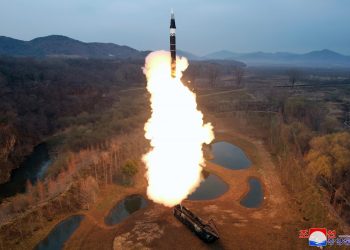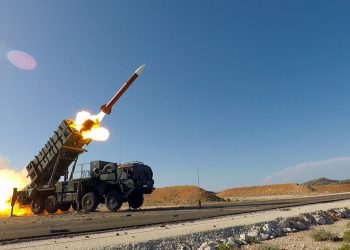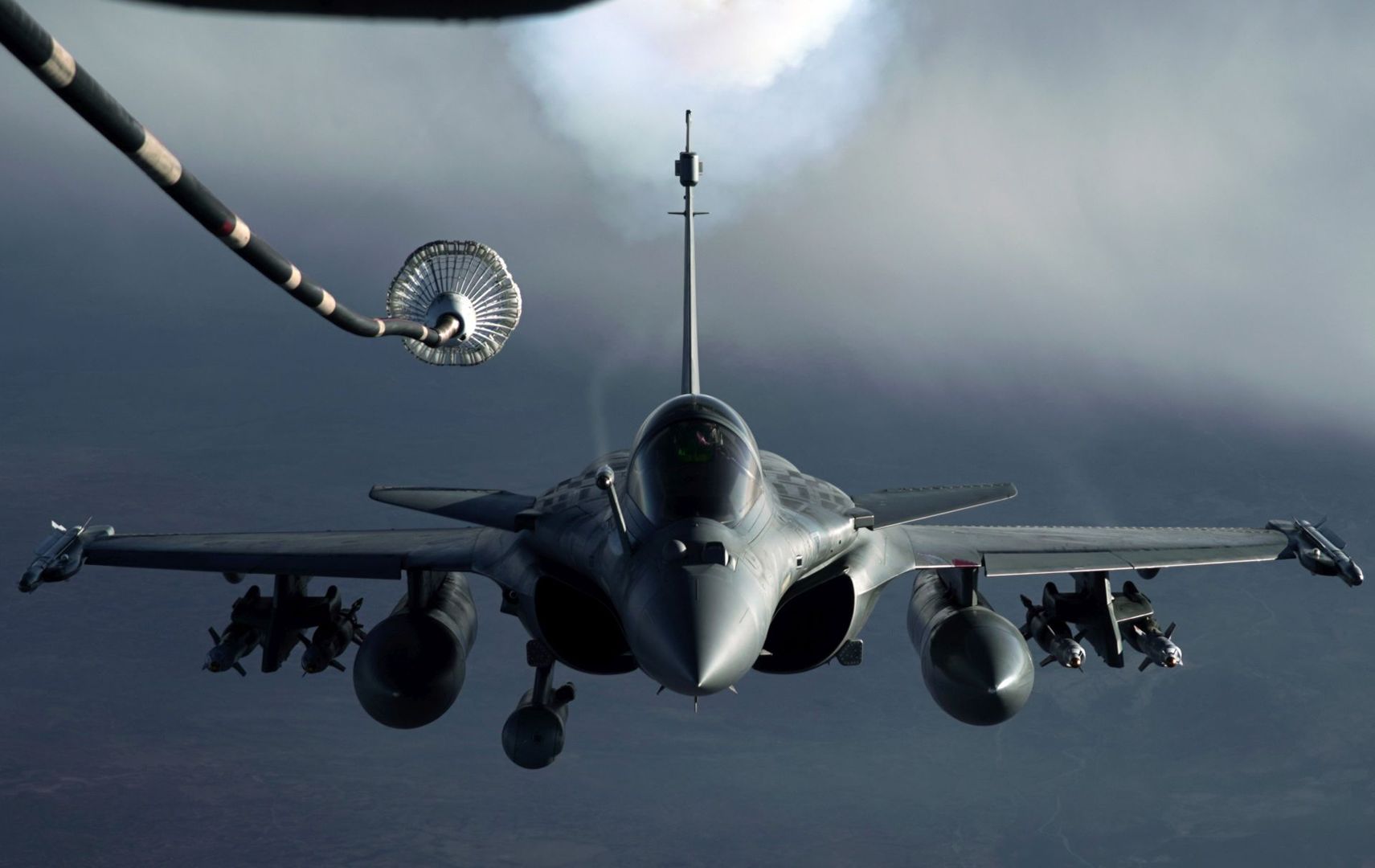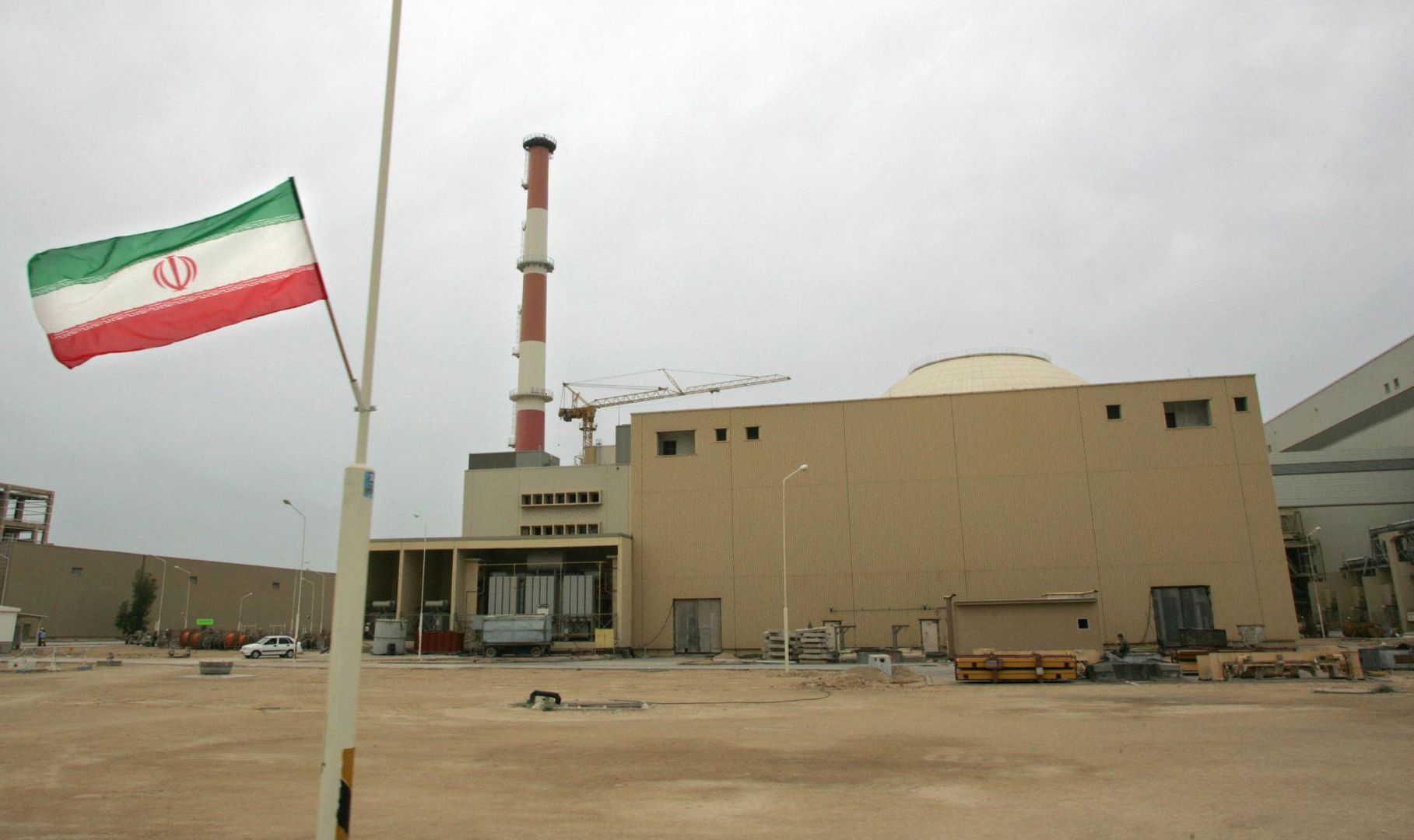Two recent missile tests conducted by North Korea were of a new intercontinental ballistic missile (ICBM) system, the Pentagon said Thursday, marking what one US official called a “serious escalation” that will be punished with fresh sanctions.
According to North Korea, the February 26 and March 4 tests were focused on developing a reconnaissance satellite, but the Pentagon said rigorous analysis concluded they were actually experimental precursors to a likely full-range ICBM launch.
Any such launch would mark the end of a self-imposed moratorium Pyongyang has had in place since 2017 and send military tensions soaring on the Korean peninsula and beyond.
The North has carried out three ICBM tests; the last in November 2017 of a Hwasong-15 — deemed powerful enough to reach Washington and the rest of the continental United States.
Pentagon spokesman John Kirby said the recent two tests “involved a new intercontinental ballistic missile system” that Pyongyang had first showcased at a military parade in October 2020.
While neither launch displayed ICBM range or capability, they were clearly intended “to evaluate this new system before conducting a test at full range in the future, potentially disguised as a space launch,” Kirby said.
South Korea confirmed the US assessment, saying the two countries — key security allies in the region — “had decided to make the assessment public judging that the international community needs to make a united stance” against Pyongyang.
Japan’s defense ministry said it had also reached the same conclusion, adding that the February launch had an altitude of up to 600km (370 miles) and travelled about 300km, while the March launch had an altitude of up to 550km and also travelled about 300km.
It called the tests a “threat to peace and security… that can never be tolerated.”
Prior to its ICBM tests in 2017, the North had carried out a series of powerful rocket launches that it insisted were part of a wider civilian space program.
Those launches were made from the Sohae Satellite Launching Station on the northwest coast, and North Korea’s official KCNA news agency reported Friday that leader Kim Jong Un visited the facility and ordered that it be expanded and modernized — a move that will only fuel speculation of an imminent, disguised ICBM test.
Fresh sanctions
North Korea is already under biting international sanctions over its missile and nuclear weapons program.
But a senior US official said that the latest tests were a “serious escalation” and the Treasury would announce fresh measures on Friday to help prevent Pyongyang accessing “foreign items and technology” to advance that program.
Such measures underline that the North’s “unlawful and destabilizing activities have consequences” and that diplomatic negotiations are the only viable path forward for Pyongyang, the official said, speaking on condition of anonymity.
Kirby said Washington “remains committed to a diplomatic approach” but “will take all necessary measures to ensure the security of the United States and our allies.”
Japan’s Prime Minister Fumio Kishida was asked about the possibility of further sanctions as he spoke to reporters following the US announcement.
“As for future measures, (Japan) will consider them from the perspective of diplomacy and sanctions while cooperating with the US and South Korea,” he said.
Nine weapons tests so far
When the new ICBM was unveiled at the 2020 parade, military analysts said it appeared to be the largest road-mobile, liquid-fueled missile anywhere in the world — and likely designed to carry multiple warheads in independent re-entry vehicles (MIRVs).
North Korea watchers regularly caution that the devices Pyongyang puts on show at its parades may be mock-ups or models, and there is no proof they work until they are tested.
Pyongyang has been abiding by its moratorium on testing ICBMs and nuclear weapons since Kim embarked on a flurry of high-profile diplomatic engagement with then US president Donald Trump in 2017.
Talks later collapsed and diplomacy has languished ever since, despite efforts by the administration of US President Joe Biden to offer fresh negotiations.
The North started hinting in January that it might lift the moratorium, and it has conducted nine weapons tests this year, including of banned hypersonic and medium range ballistic missiles.
Pyongyang has also carried out several rocket launches that were condemned by the United States and others as disguised long-range ballistic missile tests.
A fresh ICBM launch would be an early challenge for South Korea’s new president-elect, Yoon Suk-yeol, who has vowed to take a hard line with the North’s provocations.
Yoon has not ruled out the possibility of dialogue with Pyongyang, but analysts say his hawkish position puts him on a completely different footing and significantly reduces the prospect of substantive engagement.
North Korea’s banned weapons: what’s new?
Seoul (AFP) March 11, 2022 – North Korea has tested a new intercontinental ballistic missile (ICBM) system, Seoul said Friday, with the US threatening fresh sanctions over the “serious escalation”.
Pyongyang had claimed the two recent tests were of components of a “reconnaissance satellite” but the US and Seoul said they were of a so-called “monster” missile first showcased at a parade in 2020.
From hypersonics to cruise missiles, North Korea embarked on a string of launches earlier this year while threatening to restart long-range and nuclear tests.
Such tests had been put on hold while leader Kim Jong Un embarked on high-level negotiations with then US president Donald Trump, but talks collapsed in 2019 and have been stalled ever since.
What new capacity has leader Kim Jong Un’s regime developed? AFP takes a look at North Korea’s long-range ballistic missile technology:
Hwasong-12
Intermediate-range ballistic missiles (IRBMs), which are rocket-propelled for the first stage of flight, have a range of about 3,000-5,500 kilometers (1,800-3,400 miles).
North Korea’s main IRBM is called the Hwasong-12, a missile powerful enough to hit the US territory of Guam. This is what it test-fired on January 30.
Pyongyang first successfully tested the Hwasong-12 in May 2017.
Under current UN Security Council sanctions, it is banned from testing any ballistic missiles.
Hwasong-14 & Hwasong-15
Intercontinental ballistic missiles (ICBMs) have a minimum range of 5,500 kilometers (3,400 miles) and are primarily designed for nuclear weapons delivery.
North Korea has tested ICMBs three times — all in 2017 during a period of “fire and fury” when Kim and Trump traded insults and threats.
Pyongyang first tested the Hwasong-14 that year, claiming it reached an altitude of 2,802 km and flew 933 km during a successful test.
The launch date of July 4 coincided with US Independence Day, a gift for the “American bastards”.
It tested the missile again at a lofted trajectory three weeks later.
North Korea continued its ICBM testing with the even more powerful Hwasong-15, a missile capable of reaching the US mainland.
Pyongyang claimed that during the November 2017 test it reached an altitude of around 4,475 km and travelled 950 km.
Hwasong-17
First unveiled on a 22-wheeled vehicle at a military parade in October 2020, the Hwasong-17, dubbed a “monster” missile by analysts, was seen as a new iteration of Hwasong-15, with technical improvements.
While it has yet to be test-fired, the US and South Korea have assessed that the North’s two launches in early 2022 — one on February 27 and one on March 5 — “involved a new intercontinental ballistic missile system”, likely components of the Hwasong-17.
North Korea had claimed the tests were of components for a reconnaissance satellite.
The Hwasong-17 is believed to have the capacity to carry multiple warheads, making it harder to intercept.
North Korea has not demonstrated this capability before.
Experts now expect Pyongyang to test-fire the Hwasong-17 — likely disguised as a space rocket — on April 15, the 110th birth anniversary of Kim Il Sung, the founder of North Korea.

